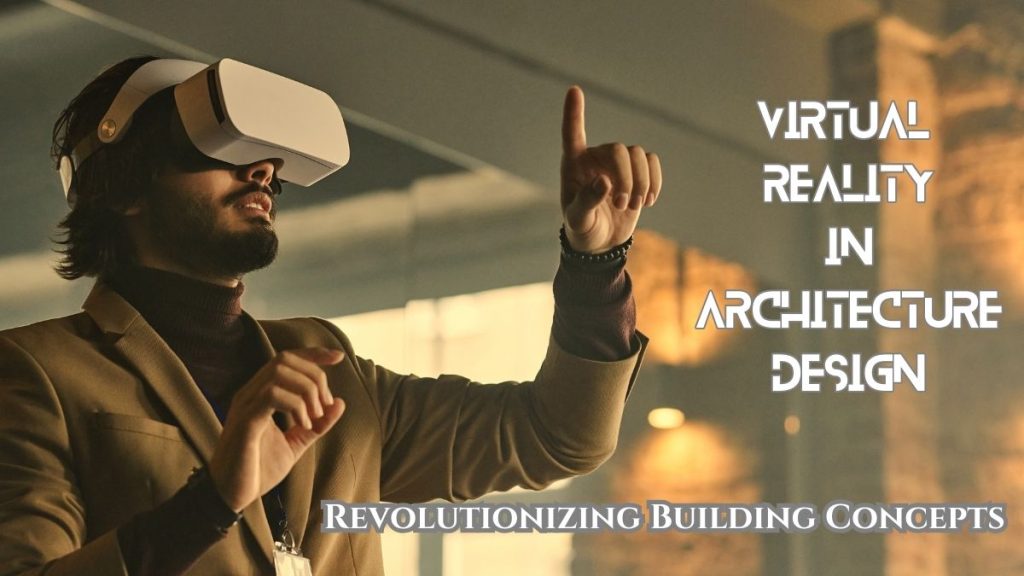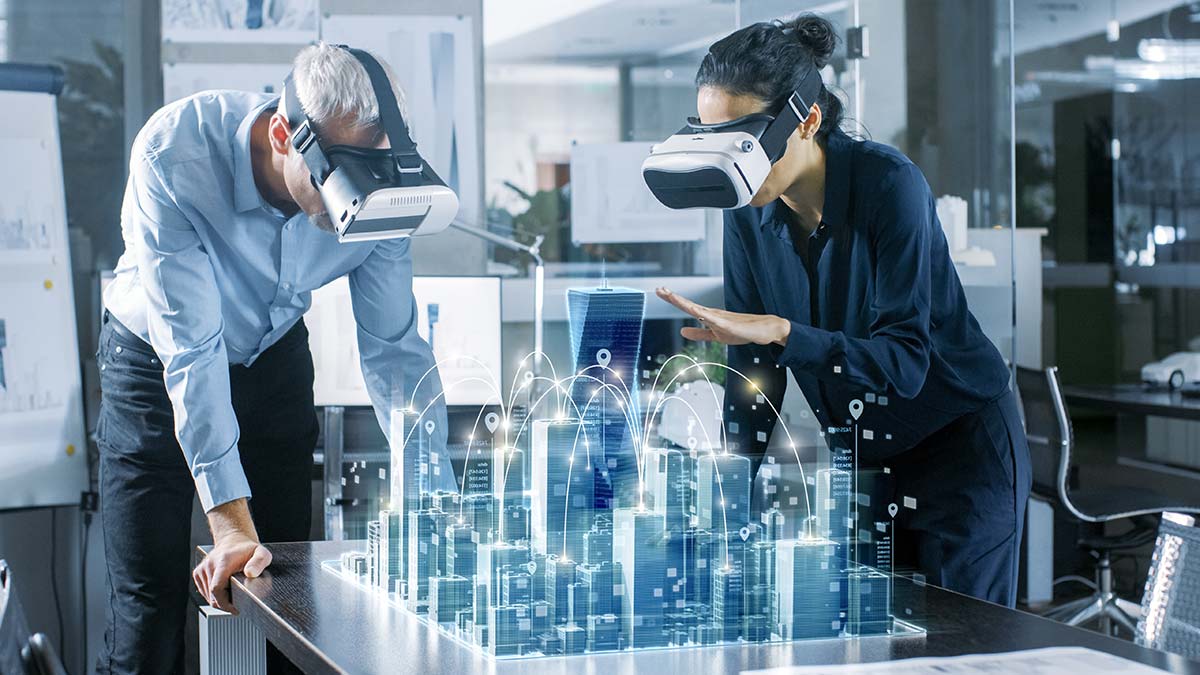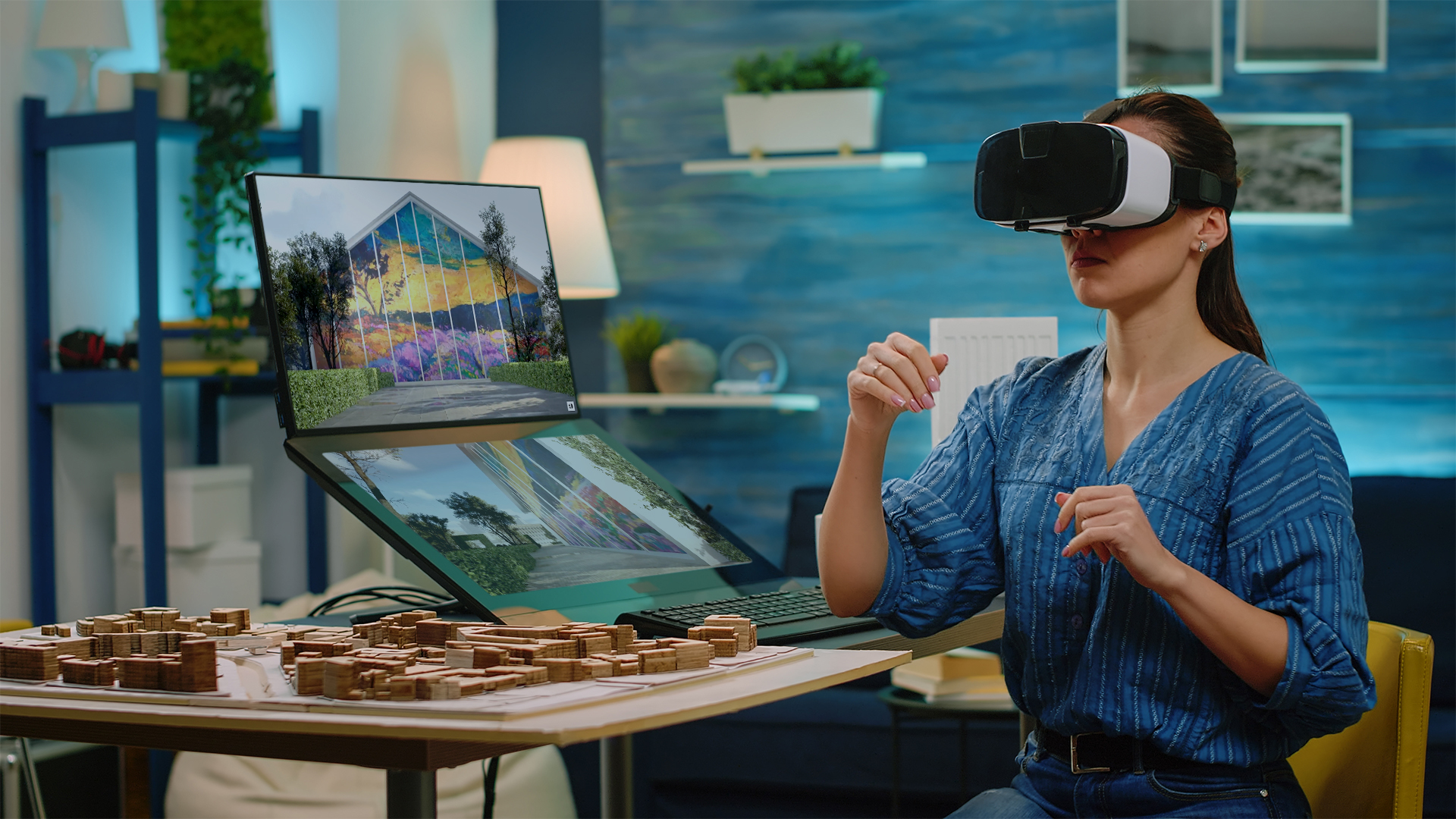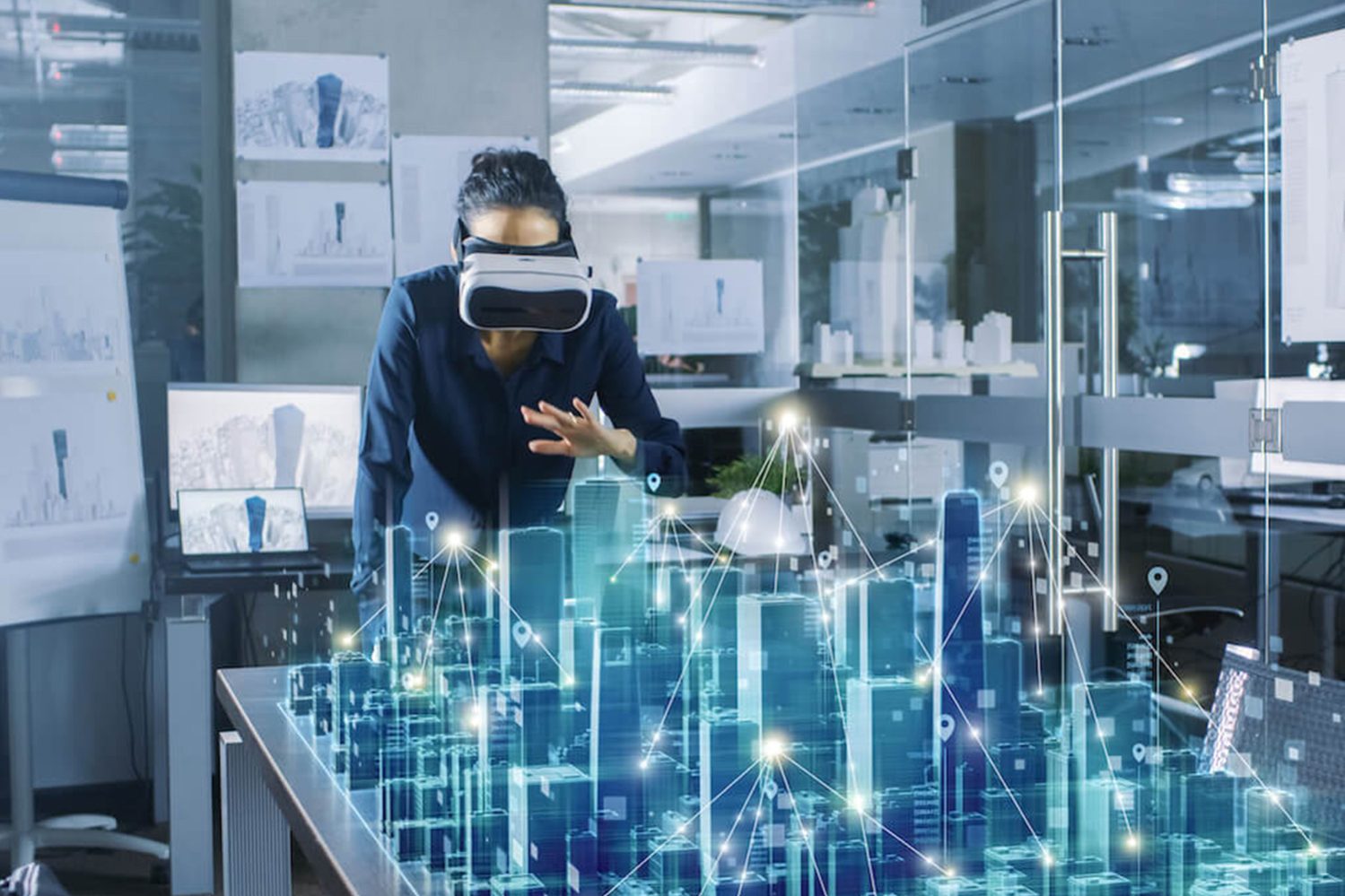Virtual Reality (VR) revolutionizes architecture design by providing immersive, interactive experiences. Architects can visualize and modify designs in real-time.
Virtual Reality (VR) technology has transformed the field of architecture design. With VR, architects can create detailed, immersive environments that allow clients to walk through and experience buildings before they are built. This interactive approach enhances understanding and communication between architects and clients.
VR also enables architects to identify and rectify design flaws early in the process. By offering a virtual tour of the future space, VR helps in making informed decisions and reduces costly modifications later. The technology fosters innovation, efficiency, and precision in architectural planning, making it an invaluable tool in modern design practices.
Related Article: Alternative Careers for Architects: Exciting New Paths to Explore
You may also read: Best Architecture Books to Inspire Your Next Design Masterpiece

Related Article: Architectural Journalism: Exploring the Intersection of Design and Media
You may also read: Architectural Solutions: Transforming Spaces with Innovative Design
Introduction To Virtual Reality
Virtual Reality (VR) is changing the way architects design buildings. This technology creates immersive 3D environments, allowing for better visualization and planning. It helps architects and clients see the final product before construction begins.
Brief History
Virtual Reality has come a long way since its inception. It started in the 1960s with simple 3D models. Early VR systems were bulky and expensive. They were not widely used in architecture.
In the 1990s, VR technology improved. Computers became more powerful and affordable. Architects began using VR for complex projects. It allowed for better design accuracy and creativity.
Technological Advancements
Recent advancements in VR technology have revolutionized architecture design. Modern VR systems are lightweight and user-friendly. They provide high-quality graphics and real-time interaction. This makes it easier for architects to create detailed virtual models.
VR headsets like Oculus Rift and HTC Vive are popular tools in architecture. These devices offer an immersive experience. Users can walk through virtual buildings and make changes in real-time.
Software like Autodesk and SketchUp support VR integration. These programs help architects design and visualize projects efficiently. They enhance collaboration and communication among team members.
Cloud computing and AI are also enhancing VR in architecture. They allow for faster processing and more realistic simulations. Architects can now create more complex and detailed virtual environments.
Related Article: How to Choose the Right Architect: Top Expert Tips

Credit: www.adorama.com
Related Article: Organic Architecture: Harmonizing Nature and Design
Impact On Architectural Design
Virtual Reality (VR) is transforming architectural design. It brings new levels of detail and immersion. Architects can now create and explore their designs in a virtual environment. This technology enhances visualization, improves client interactions, and streamlines the design process.
Enhanced Visualization
Virtual Reality allows architects to create lifelike 3D models. Clients can walk through buildings before they are built. This helps in understanding space, scale, and design elements. Traditional blueprints and 2D drawings can be hard to interpret. VR makes it easy for everyone to visualize the final product.
Using VR, architects can test different materials and lighting options. This helps in making informed decisions. It also reduces the risk of costly changes during construction. VR can simulate real-world conditions, like daylight and shadows. This adds a new level of detail to design planning.
Improved Client Interactions
VR improves communication between architects and clients. Clients can experience the design firsthand. This makes it easier to convey ideas and expectations. It also reduces misunderstandings and changes during the project.
Interactive VR tours allow clients to give instant feedback. Architects can make real-time adjustments based on this feedback. This speeds up the design approval process. Happy clients are more likely to refer future business.
Below is a table summarizing the key benefits of VR in architectural design:
| Benefit | Description |
|---|---|
| Enhanced Visualization | Detailed 3D models and real-world simulations |
| Client Interactions | Interactive tours and real-time feedback |
| Informed Decisions | Test materials and lighting options |
| Reduced Risks | Minimizes costly changes during construction |
Tools And Software
Virtual Reality (VR) is revolutionizing architecture design. It offers immersive experiences. Architects use specific tools and software to harness VR’s potential. These tools help in creating lifelike simulations of architectural designs.
Popular Vr Platforms
Several VR platforms are popular among architects. These platforms provide various features:
- Oculus Rift – Known for its high-quality visuals.
- HTC Vive – Offers room-scale tracking.
- Google Cardboard – Affordable and easy to use.
- Samsung Gear VR – Portable with good performance.
Each platform has unique features. Architects choose based on their specific needs.
Integration With Cad
Integrating VR with CAD software enhances the design process. CAD software like AutoCAD, Revit, and SketchUp now support VR integration. Here are the benefits:
| CAD Software | VR Benefits |
|---|---|
| AutoCAD | Real-time design visualization. |
| Revit | Immersive walkthroughs. |
| SketchUp | Enhanced client presentations. |
These integrations make designs more realistic. They also improve client understanding.
Related Article: Architectural Design Concepts: Unleash Creativity

Credit: archicgi.com
Related Article: Modern Architecture Styles: Discover Cutting-Edge Designs
Benefits For Architects
Virtual Reality (VR) is transforming architecture design. Architects now create immersive experiences. They enjoy several benefits, improving their workflow and client satisfaction.
Design Accuracy
With VR, architects achieve greater design accuracy. They visualize projects in a 3D environment. This helps in spotting errors early. Adjustments are made before construction begins.
Clients walk through virtual models. They experience spaces as they will be. This ensures their requirements are met. No surprises during the build phase.
VR also enables precise measurements. Architects can assess spatial relationships. They ensure all elements fit perfectly.
Time Efficiency
Virtual Reality saves architects a lot of time. Traditional design revisions take days. With VR, changes happen instantly. This boosts productivity and project timelines.
Communication with clients becomes faster. They understand designs better. Fewer meetings are needed, saving valuable time.
Teams collaborate more effectively. Everyone views the same virtual model. Decisions are made quicker, reducing project delays.
| Benefit | Description |
|---|---|
| Design Accuracy | Spot errors early, ensure client satisfaction, precise measurements |
| Time Efficiency | Instant changes, faster client communication, effective team collaboration |
Challenges And Limitations
Virtual Reality (VR) in architecture design offers many advantages. Yet, it comes with some challenges and limitations. Understanding these obstacles helps in making better decisions.
Technical Barriers
VR requires high-end hardware and software. Not all devices support VR applications. This limits accessibility for many users.
Another issue is the learning curve. Architects need to learn new tools. These tools can be complex and time-consuming to master.
Also, integration issues arise with existing software. Many architecture firms use specialized software. Making these compatible with VR can be difficult.
Cost Implications
The initial cost of VR equipment is high. High-quality VR headsets and computers are expensive. Small firms may find these costs prohibitive.
Ongoing maintenance costs also add up. VR systems require regular updates and servicing. This adds to the overall cost burden.
Additionally, software licenses can be costly. Many VR tools require annual subscriptions. This can strain the budgets of small and medium-sized firms.
| Cost Factor | Details |
|---|---|
| Initial Equipment | High-quality VR headsets, powerful computers |
| Maintenance | Regular updates, servicing |
| Software Licenses | Annual subscriptions, additional features |
Future Of VR In Architecture
The future of Virtual Reality (VR) in architecture looks promising. VR is transforming how architects design, visualize, and present buildings. The technology is evolving, offering new possibilities for the industry.
Predicted Trends
Several trends are expected to shape the future of VR in architecture:
- Enhanced Visualization: VR will offer more realistic and detailed visualizations.
- Collaborative Design: Multiple users can work on designs in real-time.
- Remote Access: Clients and architects can interact with designs from anywhere.
- Cost Reduction: VR can help reduce costs by minimizing errors and revisions.
Potential Innovations
Innovations in VR technology will drive its adoption in architecture:
- AI Integration: Artificial Intelligence can enhance VR models with data insights.
- Advanced Simulations: VR can simulate real-world conditions like lighting and weather.
- Haptic Feedback: Users can feel textures and materials in VR environments.
- Customizable Avatars: Clients can explore designs through personalized avatars.
The future of VR in architecture is bright. Expect more innovations and applications soon.
Related Article: Architectural Design Process: Unveiling Creativity

Credit: parametric-architecture.com
Related Article: Brutalist Architecture Characteristics: Unveiling Bold Design Elements
Conclusion
Virtual reality is revolutionizing architectural design. It offers immersive experiences and enhances collaboration. Architects can visualize projects better and make informed decisions. This technology is transforming the industry, paving the way for innovative designs. Embrace virtual reality to stay ahead in architectural advancements and deliver exceptional results.
Related Article: What Characteristics Identify Early Modern Architecture – A Complete Guide
You may also read: How Does Architecture Help Society: Shaping Our World
